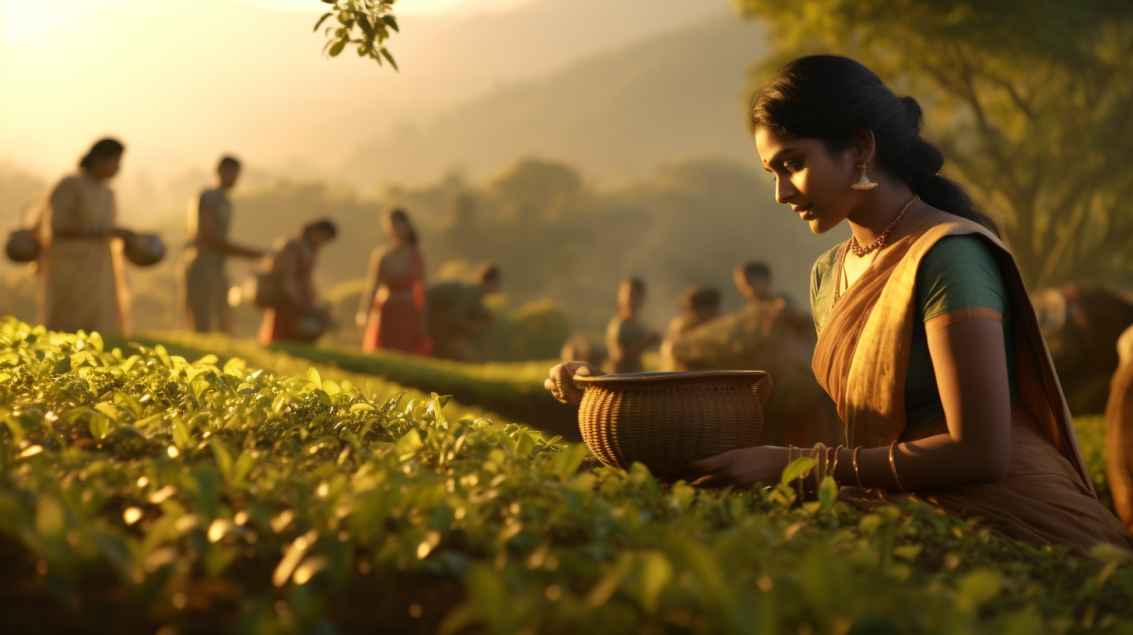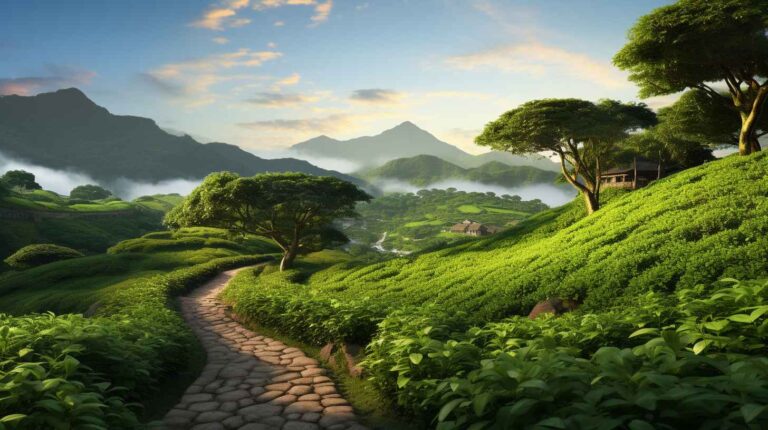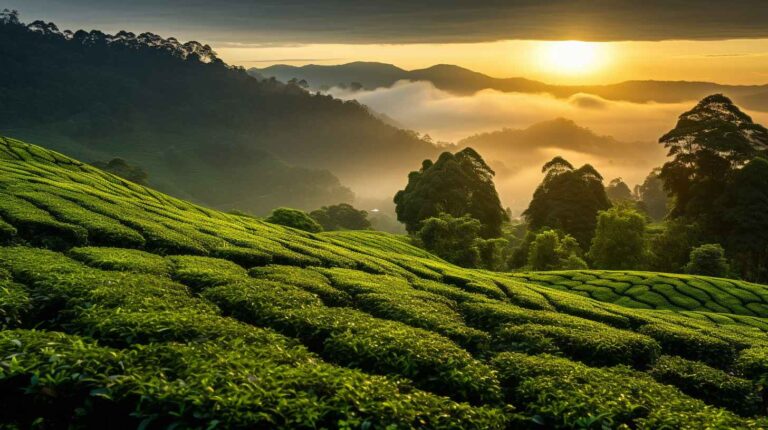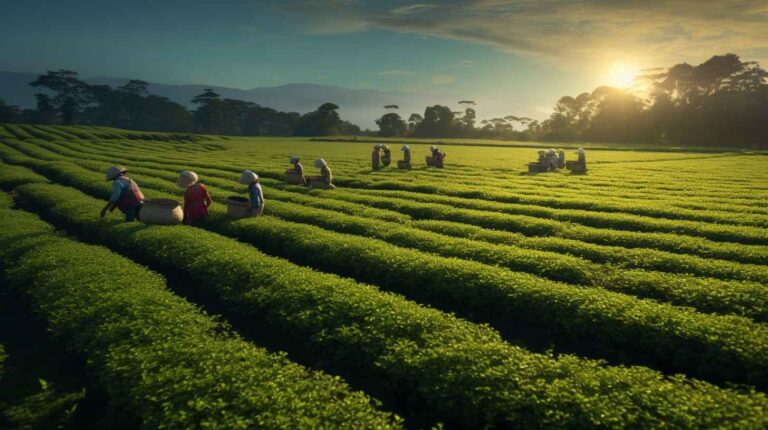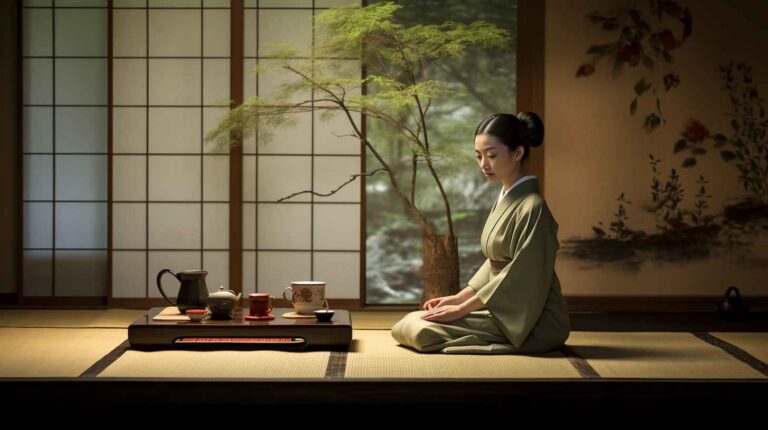Steeped in Time: How India Fell in Love with the Tea Leaf
Introduction
For centuries, the rhythmic pouring of tea has echoed across the vast landscapes of India, from the bustling streets of Mumbai to the serene tea gardens of Assam. A country rich in history, India’s relationship with tea is both ancient and profoundly personal. This aromatic beverage has, over the years, not only quenched thirst but has also brewed stories, traditions, and a unique cultural identity. Let us embark on a journey to explore the multifaceted love story between India and the tea leaf.
The Ancient Beginnings: Myth and Medicine
India’s initial rendezvous with tea is shrouded in ancient texts and herbal traditions. While today’s chai might be a ubiquitous morning ritual, its antecedents trace back to times when it wasn’t consumed for leisure, but for its potent medicinal qualities. Ancient scriptures and Ayurvedic treatises frequently mention a beverage reminiscent of tea, known as Sadamanjari. Revered for its healing properties, it was believed to rejuvenate the mind and body.
However, the Sadamanjari wasn’t the robust black tea we associate with today’s chai. It bore a closer affinity to the herbal tisanes or infusions. Made from a blend of herbs and possibly leaves from wild tea plants, it was primarily a healer’s potion, prescribed for specific ailments and overall vitality.
The Colonial Influence: Plantations and Politics
As the wheels of time turned, the narrative of tea in India underwent a significant transformation. The British colonial era ushered in a phase that changed the trajectory of tea from being a localized herb to a global commodity.
The British East India Company, having witnessed the profitable enterprise of tea in China and keen on establishing a similar trade monopoly, decided to cultivate tea within India’s vast territories. Their pursuit led them to the verdant landscapes of Assam, where, to their delight, they discovered the indigenous tea plant, Camellia sinensis var. assamica, growing in the wild. This discovery marked the onset of commercial tea cultivation in India.
The hill stations of Darjeeling, Nilgiris, and several other regions soon became home to sprawling tea estates, each carving its niche with a unique tea flavor profile. These regions, with their specific climates, gave rise to teas that would soon be celebrated worldwide.
But the British didn’t just stop at cultivation. Recognizing the vast consumer base within India, they embarked on an aggressive campaign to make tea a daily beverage for the masses. “Tea Breaks” were introduced for laborers, serving the dual purpose of rejuvenating the workers and acquainting them with tea. Marketing efforts painted tea as a sophisticated and aspirational drink, gradually ensuring its place in Indian households.
The Chai Culture: Beyond the British Brew
India, with its rich tapestry of spices and culinary prowess, soon began to weave its magic into the British-introduced tea. The tea that was initially consumed with just milk and sugar underwent a flavorful transformation with the addition of spices, giving birth to the renowned masala chai.
This wasn’t merely about enhancing flavor. The spices like cardamom, ginger, cloves, and black pepper have their roots in Ayurveda, India’s ancient medicinal system. Their inclusion not only made the tea tantalizingly aromatic but also fortified it with health benefits.
Post-independence, as India found its footing, the chai culture witnessed an organic growth. Across cities and towns, corners were occupied by chai tapris or tea stalls. These humble establishments, often just equipped with a kettle and a makeshift stove, became central to community interactions. Conversations over a cup of chai spanned diverse topics, from intense political debates to the latest cricket match scores, making chai a symbol of togetherness.
Tea’s Socio-Cultural Fabric: More than Just a Drink
The significance of tea in India transcends its status as a mere beverage. It’s woven into the nation’s socio-cultural matrix. In an Indian context, tea symbolizes warmth, hospitality, and a shared bond. The simple act of offering tea to a guest, encapsulated in the phrase “Chai piyoge?”, is a gesture of welcome.
Festivals, ceremonies, and even ordinary days often commence with the brewing of a fresh pot of tea. The evening tea ritual holds a special place in many households. It’s a moment of pause, reflection, and bonding, as families gather around the tea table, sharing tales of their day.
As we delve deeper into the realms of India’s relationship with tea, it’s evident that this bond isn’t fleeting. From ancient traditions to modern-day adaptations, tea has remained a steadfast companion, evolving in flavor but constant in significance.
The Economic Impact: Livelihoods and Landscapes
India’s multifaceted relationship with tea is not just steeped in culture, but it also has profound economic implications. The tea industry, an amalgamation of sprawling plantations and small tea growers, is a pivotal sector for India, providing livelihoods to millions and shaping the socio-economic landscapes of numerous regions.
A Tapestry of Jobs: From Leaf to Cup
At the heart of India’s tea industry lie the people – the workforce that ensures that the lush green leaves make their journey from the plant to our cups. Starting with the tea pluckers, the backbone of the industry, who with their nimble fingers pick only the best leaves, ensuring quality at the very first step. Then, there are the factory workers, who process these leaves through a series of stages – withering, rolling, fermenting, and drying, transforming them into the final tea product.
Furthermore, the industry also offers employment in ancillary sectors such as packaging, transportation, marketing, and sales. These jobs are crucial, especially in rural and semi-urban areas, where alternative employment opportunities might be scarce.
Tea Tourism: A Journey into the Heart of Plantations
With the rising global interest in tea, there has been a parallel surge in tea tourism. Regions like Darjeeling, Assam, and Munnar are not just known for their exquisite teas but are also sought-after travel destinations. Tourists flock to these regions, eager to walk amidst the tea gardens, experience the plucking process, and witness the transformation of leaves into tea.
These experiences provide a dual benefit. While tourists receive a firsthand insight into tea production, the local communities benefit economically. Many tea estates have refurbished their British-era bungalows into luxurious accommodations, adding an additional revenue stream.
Small Tea Growers: The Unsung Heroes
While the vast plantations often grab the limelight, the role of small tea growers cannot be understated. They might own just a few acres of land, but collectively, they contribute significantly to India’s tea production. Their farms add to the diversity of Indian teas, often producing unique blends that stand out in flavor and aroma. Additionally, they play a pivotal role in sustainable tea cultivation, often adhering to organic and eco-friendly practices that ensure the well-being of both the land and the consumer.
Innovations and Modern-day Trends
India’s millennia-old affair with tea is not static. It continues to flourish, adapt, and evolve, keeping pace with global trends while still retaining its traditional charm.
Boutique Tea Cafes: A Fusion of Tradition and Modernity
In recent years, urban India has witnessed the emergence of boutique tea cafes. These are not your traditional chai tapris, but rather upscale establishments offering a vast range of teas from around the world. From Japanese matcha lattes to the delicate white teas of Darjeeling, these cafes are expanding the Indian consumer’s palate. Their modern interiors juxtaposed with traditional tea offerings make them a hotspot for both the younger generation and the connoisseurs.
A Renaissance in Artisanal and Single-Origin Teas
With the global shift towards authenticity and sustainability, there’s a renewed interest in artisanal and single-origin teas. Consumers today are more discerning, often seeking information about the source of their tea, the cultivation practices, and the unique flavor profiles. Recognizing this trend, many Indian tea producers are experimenting with novel blends, innovative infusions, and distinct fermentation techniques. This not only ensures the diversity of India’s tea offerings but also its relevance in the contemporary market.
Conclusion: A Love Affair that Continues to Brew
The relationship between India and tea is profound, layered, and enduring. It is a dance of history, culture, economy, and innovation. From the mists that envelop the tea gardens at dawn to the last sip of an evening chai, tea is not just a beverage for India; it’s an emotion.
From ancient Sadamanjari to the bustling modern tea cafes, the journey of tea in India is emblematic of the nation’s broader narrative. It encapsulates the spirit of India – one that respects and cherishes its traditions while embracing change and innovation.
As we stand at this juncture, looking back at the winding trails of tea leaves, we can only marvel at this extraordinary bond. A bond that has withstood the test of time, foreign influences, and socio-economic shifts. As the sun sets over the vast tea estates and the aroma of freshly brewed chai wafts through the air, one thing is certain – India’s romance with the tea leaf is eternal, a story that will continue to be told for generations to come.
